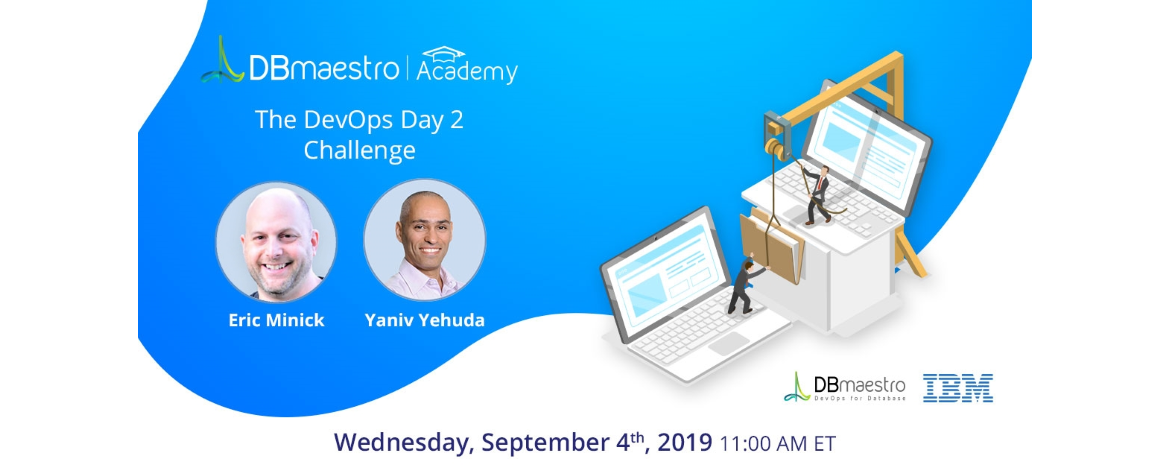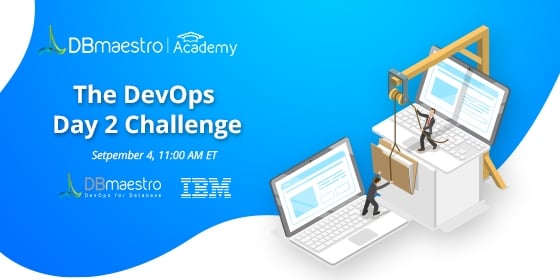With success being measured by different yardsticks, and with each proponent of DevOps having a different criteria for what they call a successful DevOps initiative, the answer is not a simple one. If your organization has run a successful DevOps pilot in one team or one department, does that mean that your organization is now a DevOps success? The answer to this question, as well as the answer to “What happens now” is what IBM’s Eric Minick refers to as “DevOps Day-2“.
Very succinctly put, the DevOps Day-2 challenge is how your organization goes about embracing DevOps completely, rolling it out from your successful localized effort to a company-wide DevOps initiative. This is definitely much easier said than done, as any form of enterprise rollout is always a challenge. Adding in the fact that any rollout will perforce have to involve employees from every department, and will include retraining employees to use dedicated CI/CD tools, and this challenge is not a simple one that is easily overcome.
While not insurmountable, it requires the oversight of a senior figure with enough understanding of your DevOps infrastructure to be able to, on the one hand, be firm enough to get around objections which will arise from power plays and internal politics, while at the same time being a guiding hand to all DevOps newcomers.
 Yet another aspect of the Challenge is the Database, which is a forgotten (or willfully ignored) part of any development process. The Day-2 challenge means rolling out DevOps to the entire company, but the database is often not an area which has received much focus, DevOps or otherwise. The 2019 Database DevOps Survey showed that over two-thirds (68%) of database releases are done either manually or by executing scripts, with only 32% done using an automation tool.
Yet another aspect of the Challenge is the Database, which is a forgotten (or willfully ignored) part of any development process. The Day-2 challenge means rolling out DevOps to the entire company, but the database is often not an area which has received much focus, DevOps or otherwise. The 2019 Database DevOps Survey showed that over two-thirds (68%) of database releases are done either manually or by executing scripts, with only 32% done using an automation tool.
This means that bringing the database team into your DevOps initiative will likely be more difficult than in other areas. A database release automation tool is ideal for this situation, but beyond the tools which are key for success, the mind frame must also shift to accommodate database DevOps.
The essence of the Day-2 challenge can be summed up with one word: “Scalability”. Getting a team of 50 or even 100 to use CI/CD tools such as Jenkins, TeamCity, UrbanCode and others is not an issue, but getting 5,000 or 10,000 users (or in some cases even more) to do the same is much harder.
Not only must the CI/CD tools that you choose be the right tools (and this may require rethinking your current structure, if your current tools aren’t scalable), but you will need to “stamp out” instances of pre-DevOps thought and habits.
The problems presented by the DevOps Day-2 Challenge, as well as the separate issue of the difficulty bringing your database into the DevOps fold, will be the subject of a webinar hosted by IBM’s Eric Minick and DBmaestro’s Yaniv Yehuda. The webinar, which will take place on September 4th at 11:00 AM ET, will go into more detail on the Day-2 Challenge, and will demonstrate how using IBM’s UrbanCode and the DBmaestro DevOps Platform together can be the ultimate solution for creating a one-stop shop for all your DevOps needs, effectively solving the problems the Day-2 Challenge presents.
For more information and to register for the webinar, click here.







